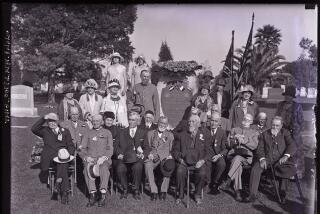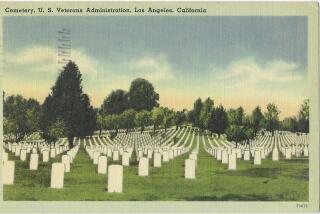After Oil Boomtownâs Bust, Nature Added Its Blows
Decades before there were automobiles, there was Mentryville: Californiaâs first oil boomtown, not far from Los Angeles. Its first gusher kept producing for 114 years.
Gold turned up in these parts seven years before the 1849 Gold Rush. Cattleman Francisco Lopez pulled a few wild onions out of the ground and noticed flakes in the roots. San Fernando placers, as they were called, poured into Placerita Canyon in what is now the Santa Clarita area. The prospecting was good, but not exceptional, for several years.
More than 30 years later, a Frenchman discovered black gold in nearby Pico Canyon. Mentryville became a thriving company town from 1876 until the Great Depression and, more recently, a tourist attraction. But a 2003 brush fire lapped at its fringes, and 2004âs storms flooded its buildings.
Whatâs left of the 850-acre town site about five miles west of Newhall includes a red barn, a two-story 13-room mansion and a one-room schoolhouse. Then thereâs the legendary ghost.
Mentryvilleâs history is told from old Times news stories, the Friends of Mentryville website and an interview with the groupâs former president, Duane Harte, who owns an advertising firm and has lived in the Santa Clarita Valley for 32 years.
Charles Alexander âAlexâ Mentrier was born in France in 1846. His father, a blacksmith, brought the family to the United States seven years later and anglicized their surname.
Alex Mentry was a quick study, drilling 42 successful oil wells in Pennsylvania before looking west. He arrived in San Francisco in 1873 and then moved south, working for a drilling company in Grapevine Canyon, between Los Angeles and Kern County. (This is the Grapevine known today more for snow than for oil -- especially this time of year.)
Two years later, Mentry, 29, teamed up with Demetrius G. Scofield, head of the fledgling California Star Oil Works. They bought oil claims on land that had belonged to Gen. Andres Pico, commander of the Mexican forces in the Mexican American War. Pico had begun digging for oil in 1865, with little luck.
Mentry deepened one of Picoâs wells and drilled two new ones. Discouraged by the modest yield, he sold his share of the claim to Scofield -- who offered him a handsome salary to run the drilling operation.
On Sept. 26, 1876 -- a mere three months after Mentry sold out -- he rolled up his grease-splattered sleeves and, using an old railroad axle as a drill, brought in well No. 4, the gusher. Scofield became a rich man; his company was eventually acquired by Standard Oil, predecessor of Chevron.
Mentryâs discovery started an oil rush and a boomtown, which was named for him. The field produced 300 to 500 gallons per day. The overgrown paths of Pico Canyon bustled with men who made $4 a day working 12-hour shifts, six days a week.
Soon 100 families lived in redwood cabins. Single men lived in tents or at the boardinghouse.
Natural gas from the fields heated and lighted the housing. Local asphalt paved the main road and, later, a tennis court. The town built a one-room schoolhouse and a community hall.
But no bars: Mentryville was a dry town in a wet county. Thirsty workers had to trek to a Newhall bar or wait for a friendly stagecoach driver to smuggle in booze. Mentry had imbued the town with his puritanism as well as his name.
He was no fan of foul language either. If workers were caught swearing, they had to drop a few coins into a glass jar.
The timing of Mentryâs big strike couldnât have been better. Three weeks earlier, Southern Pacific Railroad had driven a golden spike at Lang Station in Newhall, connecting Los Angeles to Northern California and the rest of the nation.
Horse-driven carts hauled Mentryvilleâs oil to a refinery near the railroad station, from which it was shipped north and south.
When the railroad increased its freight charges, Mentry built the stateâs first oil pipeline. It reached a little more than five miles, from Pico Canyon to the Newhall refinery. Eventually it was extended about 50 miles to the port in Ventura for loading into ships. Fearing competition, the railroad lowered its fees.
By 1885, Mentry had a wife and four children. The family entertained dignitaries such as U.S. Sen. Leland Stanford, a former governor and later co-founder of Stanford University; and future U.S. Sen. Charles N. Felton, an oil company president and chief backer of Scofield. Feltonâs name adorned the schoolhouse and eventually the school district.
In the 1890s, Mentry built his family a 13-room mansion. The porch steps served as court for a traveling circuit judge. The stagecoach that arrived twice a day from Newhall used the porch as a passenger platform. The stages carried sweets, especially coconut macaroons, from the Mentryville bakery to Newhall.
But in 1900, Mentry was taken ill. Many thought heâd had an allergic reaction to a bee sting, according to the late Santa Clarita Valley historian Jerry Reynolds. The Times reported that it was typhoid -- but no other victims had been reported.
Five years ago, a columnist for the Santa Clarita Valleyâs local newspaper, the Signal, wrote that Mentry had been asleep in his mansion when he was bitten on the lip by a deadly beetle called the âkissing bugâ or âassassin bug.â The columnist, John Boston, had interviewed a friend of one of Mentryâs daughters-in-law, whom everyone called âAunt Gladys.â
Rushed to Los Angeles for treatment, Mentry developed pneumonia and died at 54. He was buried at Los Angelesâ Evergreen Cemetery, according to a Times story.
With Mentryâs passing, much of his town folded. Families who had worked there for years moved on to bigger oil fields. The town had petered out by 1932, with rusty oil-drilling machinery and rotten wooden derricks littering the ground. The onetime gusher had turned into a relative trickle, but it kept producing until it was capped in 1990. By 1938, only a foreman and his family remained, serving as caretakers and living in Mentryâs mansion.
The last of the caretakers was Francis âFrenchyâ Lagasse, who started working for Standard Oil in Pico Canyon in 1947. He and his wife, Carol, and their three daughters moved into the mansion in 1966 and started to restore what remained of the town.
âStandard Oil wanted to bulldoze everything,â said Harte, past leader of the Friends of Mentryville. âThe Lagasses convinced the company that they could restore the town. And they did it on their own dime.â
Then came the 1994 Northridge earthquake, which undid much of their work. With their home uninhabitable, the Lagasses moved out.
By then, Standard Oil had become Chevron. In 1995, the company donated more than 850 acres in Pico Canyon to the Santa Monica Mountains Conservancy. The land became part of Santa Clarita Woodlands State Park. With the help of the Friends of Mentryville, the buildings were put on new foundations, fixed up and opened to tourists that year.
But then came fire and flood. The October 2003 Simi Valley fire ravaged more than 98,000 acres, including much of Pico Canyon. Mentryville survived, but âonly by the grace of God,â Harte said. âFirefighters and the California Department of Corrections firefighters saved our town.â
The Friends of Mentryville carried on. âWe were still giving tours until 2004, when it started raining,â Harte said. The rains did what the fires could not.
âFlooding affected Mentryville quite seriously,â he said. âBoth bridges into town and the visitors parking lot were washed out.â The buildings were flooded.
Repairs await funding, but the park is accessible by foot or bicycle. State historical markers stand near the barn and, farther up the canyon, at the long-lasting oil well, Pico No. 4.
Over the years, Pico Canyon and Mentryville have been popular filming sites. The area stood in for Africa in Steven Spielbergâs 1985 film âThe Color Purple.â For the Fox sci-fi series âThe X-Files,â the town didnât need a disguise: It simply had to look like a creepy ghost town.
Mentryville reputedly even has a ghost: Mentryâs. Rumor has it that he held a light to guide the Lagasses to safety during the 1994 earthquake, Harte says.
Harte stumbled across the site in 1995.
âMentryville was like walking into yesterday,â he said, âand Iâve been involved with it ever since.â
More to Read
Sign up for Essential California
The most important California stories and recommendations in your inbox every morning.
You may occasionally receive promotional content from the Los Angeles Times.










